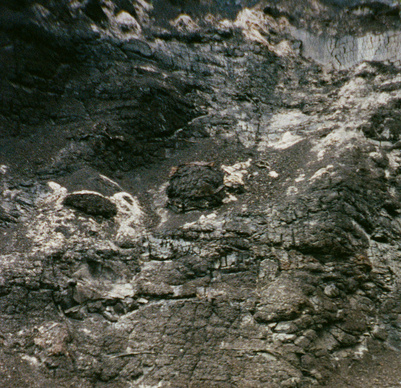The framework for the project
The photosynthesis of plants constitutes the medium in which humans can exist; It is a sphere of oxygen and glucose; It is the foundation of existence. Human beings and all other life forms are embedded in this medium. Our exchange of energy and matter creates a mutual dependence on each other and characterizes what we call nature:
A fluid of cyclic composition and decomposition.

To distance ourselves from the natural is the manifesto of civilization. Religious narratives confine us (humans) to the belief that we are superior to everything else. Climate change and the sixth mass extinction are products of the Anthropocene era, testifying that as a species, we must act differently if we want to withstand the challenges that threaten our existence.
I believe we need to think differently about ourselves, existence, life, and death. That is why I have chosen to work with the grave as a form of active philosophy. The phrase "Af jord er du kommet, til jord skal du blive og af jord vil du igen opstå" ("From dust you came, to dust you shall return, and from dust you shall rise again") is embedded in our Christian culture and poetically describes that humans are in a process. Life and death are generally understood as a starting point and an endpoint, but the sentence tells us that these two concepts can change order, and death can precede life. In other words, it is a cyclical understanding of nature and a dissolution of life and death as stationary states. Life is death, and death is life.
However, this teaching has been lost in what I would call cultural automatism.


When a death occurs, cultural automatism kicks in to prepare the funeral rituals: undertaker, coffin, hymn booklets, church and cemetery... And before you know it, you find yourself in the church seven days later. Then you are buried in a coffin or an urn, and suddenly you are removed from the surface you once belonged to.
I believe that we alienate death and that we need an alternative to the automated funeral culture.
We should embrace death because death is life, and death and life are nature.
I strive to break down narratives and dogmas so that our embeddedness in nature becomes conscious. Therefore, I focus on the decomposition of the body, which I visually and philosophically associate with the absolute unmasking of the self. At the same time, this is an opportunity to rediscover our earthly connection and cultivate a new romance based on time, transience, love, and the cycle of nature.

The Project
I have created a graveyard in the forest that can establish a connection between humans and nature. At the same time, it transcends narratives about death and life.
The deceased body will lie on the ground and, like other animals and plants, undergo decomposition. The presence of the body is visible but the body itself is veiled. I am very aware of the moral considerations this raises. Therefore the main focus of the project has been to develop a natural membrane over the body that can merge with nature and visually balance the repulsive and the natural, aiming to create a poetic element.

The Membrane
The membrane consists of weaved willow and is made to last at least five months, which is the time it takes for a body to fully decompose to the state of skeletonization.


During the decomposition the body will create gases.
To avoid the smell a 20 cm layer of soil is scraped off the surface, creating a depression, then mixed with 1/4 clay. The body will be placed in the depression with the soil on top. The clay will secure a dense soil that won't disappear due to rain. Hereafter the membrane will be placed on top with big rocks holding it in place. The membrane will undergo a transition both in colour and in structure. The end result will be a small hill in the landscape.




The Graveyard
The graveyard is based in Hesede Forest in South Zealand, a place I have visited since childhood.
It has been chosen for its diverse topography which has allowed me to explore various compositional approaches.

The premises of composing in the forest has been to avoid destroying any ecosystems and not to interupt the movement of animals and people in the forest. The end result is a graveyard on a hill in the forest with 30 cm high stone fences joining the trees together to make intimate spaces. The height of the fences makes them easy to cross and only serves as a visually indication of a space. This is inspired by Knud Lavard's Chapel (a ruin) and Haraldsted Forest, both in Ringsted.
1:200 Landscape model
Renders of the project
Further development
The academic project ended with an exam The 31st of May, but the project will continue.
I am inspired by the botanical architect Marcel Kalberer and whish to proceed in his direction.
A question I have been asked quite often during my work is:
"How do you guard against predators such as foxes?"
I will answer that question with a sketch of the next step in the development of the project:

Thank you to:
Steen H. Madsen for a great 2-day-course in willow weaving.
Oliver Fjordside for helping me with diffrent technology during my work.
Nina Brix Larsen for inspirational conversations.
Jørgen-Erik Larsen for helping me move my models.
Annette Kjærgaard Brix Hansen for supporting me through the whole education.
Kristine Annabell Torp for fantastic guidance through my projects.
MAKERSPACE Næstved for letting me work in your workshop.






















































